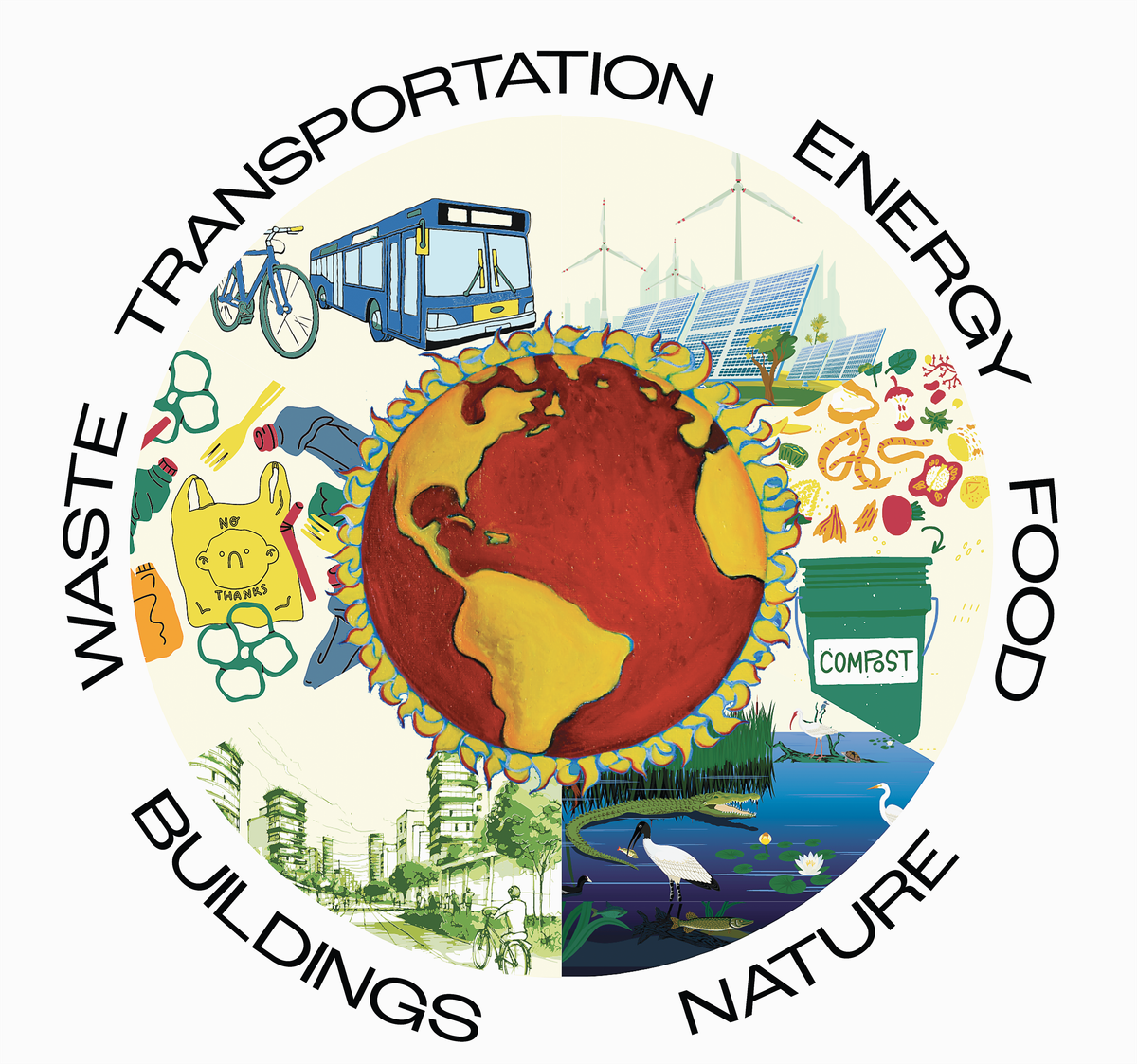Put a CAP On It!

Dispatches from a Climate Activist
by Belvin Olasov
Climate Action Plans are not a magic spell that, once passed, will transform the entire governmental apparatus into a climate progress juggernaut. (This is despite my attempts at druidic rituals and positive thinking.) CAPs are, however, a crucial step forward, the foundation of a house. Without a CAP, you have no chance at robust, comprehensive climate action – with one, you have a goal and a roadmap.
We’re in a special time for Climate Action Plans right now, as both Charleston County and South Carolina as a whole have CAPs about to pop out the oven. Charleston County’s draft plan will be available to view online starting March 7th and should go up for a vote in mid-June, while SC’s draft plan can be viewed now. There’s never been a better time to Know Your CAP!
How Are CAPs Made?
Climate experts get in a room together and form a comprehensive picture of what leading on climate change would entail, from green building incentives to composting programs to walk, bike, and bus infrastructure. The plan is then put before a council with varying levels of climate science knowledge and orneriness. To be politically palatable, the plan makes clear that each of its items is a recommendation, which we can all agree is a stronger word than a suggestion, a proposal, or a humble request.
SC’s CAP is a special case where it’s all just apportioning federal funding, so no further legislative approval is needed.
We Have a CAP – What Now?
Once passed, the responsibility of implementing a local CAP is largely vested in the Sustainability Director. This is one of the most powerful outcomes of the CAP – there is now someone in the government whose job is to advance climate action.
Look to the City of Charleston, which passed their Climate Action Plan in 2021. Since then, we’ve seen a compost dropoff program, more buildings built with the Charleston RISES green building program, electric vehicle charging station requirements, and more. And that’s all while the Sustainability Department is still one person, Director Katie McKain. Imagine what we’d accomplish with more staff and more championing from our public officials – when things like a King St. bike lane are discussed at City Council, no councilmember mentions the climate impacts or the City’s CAP calling for bike lanes.
What helps keep CAPs from being so many pretty words on paper is their accountability mechanisms and metrics. They set goals – the City of Charleston for 56% emission reduction from 2018 levels by 2030 and net zero by 2050. They have greenhouse gas audits to see how much climate pollution reduction has been achieved. They track the progress of each of the action items (51 in the City’s case).
If one were serious about taking action on climate locally, this is how you’d do it. The climate crisis calls for transformative action, and so CAPs call for transformative action, despite the tendency for local governments to move at an incremental pace.
Enter Charleston County
Charleston County passed a climate action resolution in 2021 that “encourages the development and implementation of an equity-centered, community-based, integrated climate action plan; and commits to work closely with municipal governments within Charleston County on their plans to address climate mitigation.” (Not to brag, but the Charleston Climate Coalition led the charge on pushing and passing the resolution.)
Now, the County is finally developing that plan. County Council opted to have consultants from the Canadian Sustainability Solutions Group take the lead on their CAP planning. CAPs are Sustainability Solutions Group’s bread and butter, with dozens of previous projects in American cities like Burlington, VT and Tacoma, WA, as well as every Canadian city you’d recognize by name.
Sustainability Solutions Group has identified the “Big Moves” of the plan as:
- Affordable, resilient buildings
- Sustainable and inclusive transportation
- Clean energy generation
- Innovative industrial and agricultural sector
- Optimized waste and water stewardship
Each action item has been calculated for emission reductions over time and for economic impact, both in terms of initial cost and ultimate savings. The County has a lot of power, and this CAP could end up being deeply consequential for local climate action.
The question, as always, is will it get passed and will it get funded? If you push hard for it when it comes up for a vote, you, dear reader, will be part of the answer.